Here we share data on forms broken down by their purpose. The specific purposes considered were:
As you might expect, comparison forms are the longest given the amount of information they need to create a quote.
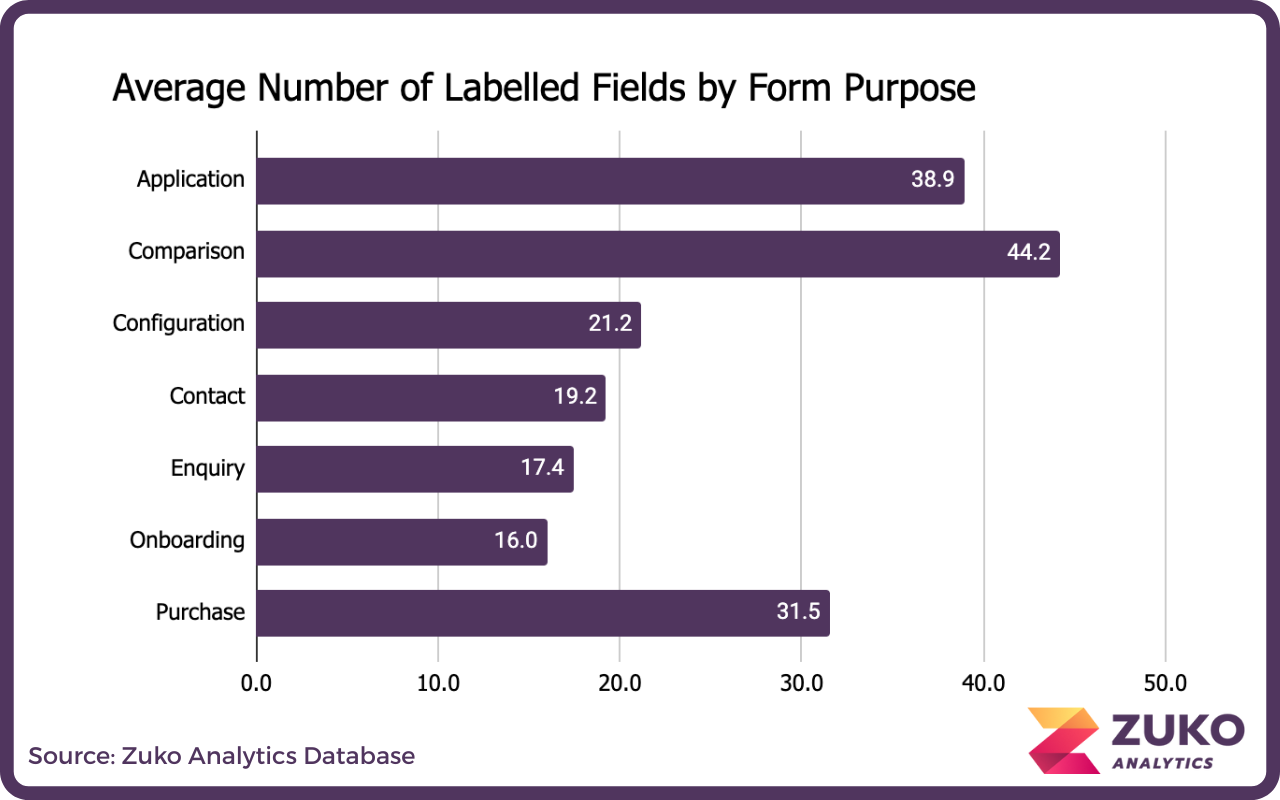
If we look at completion rate we can see the highest conversion for registration forms and the lowest for contact & enquiry forms.
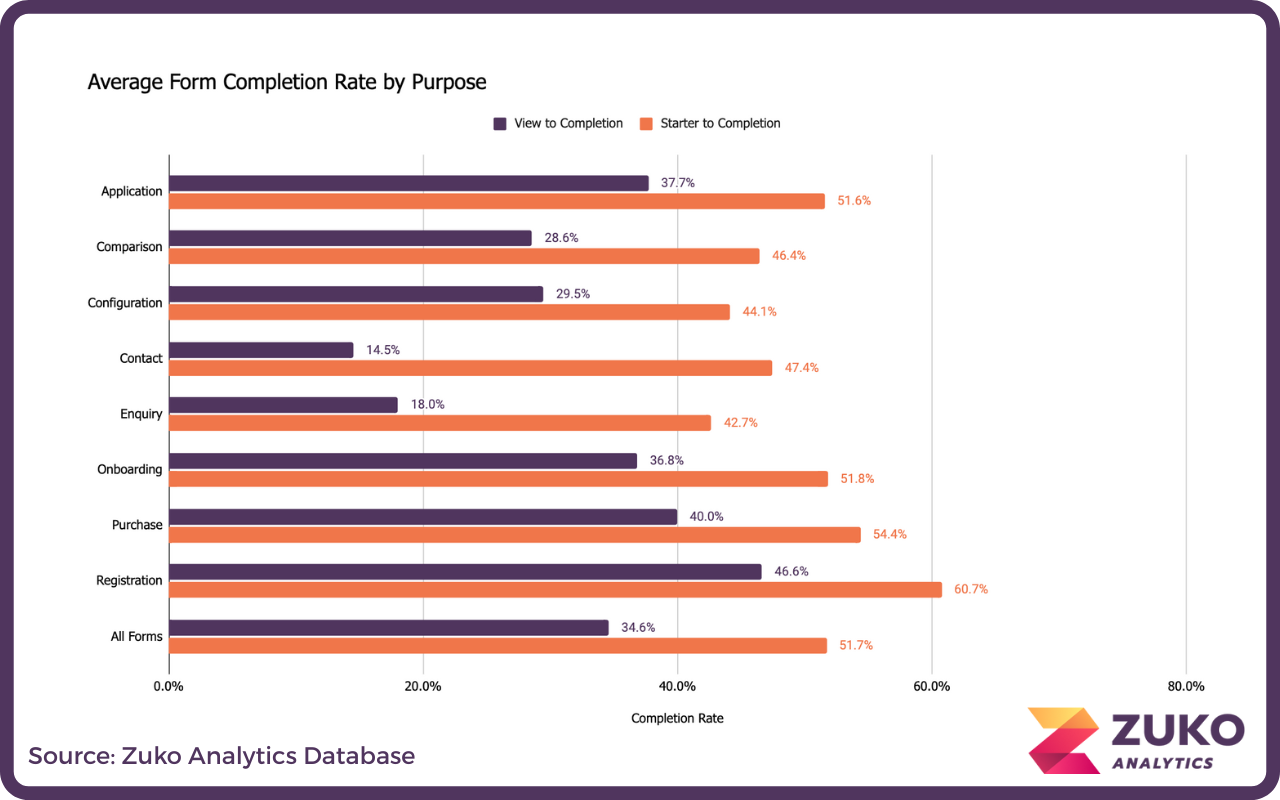
The form completion breakdown by purpose and device type:
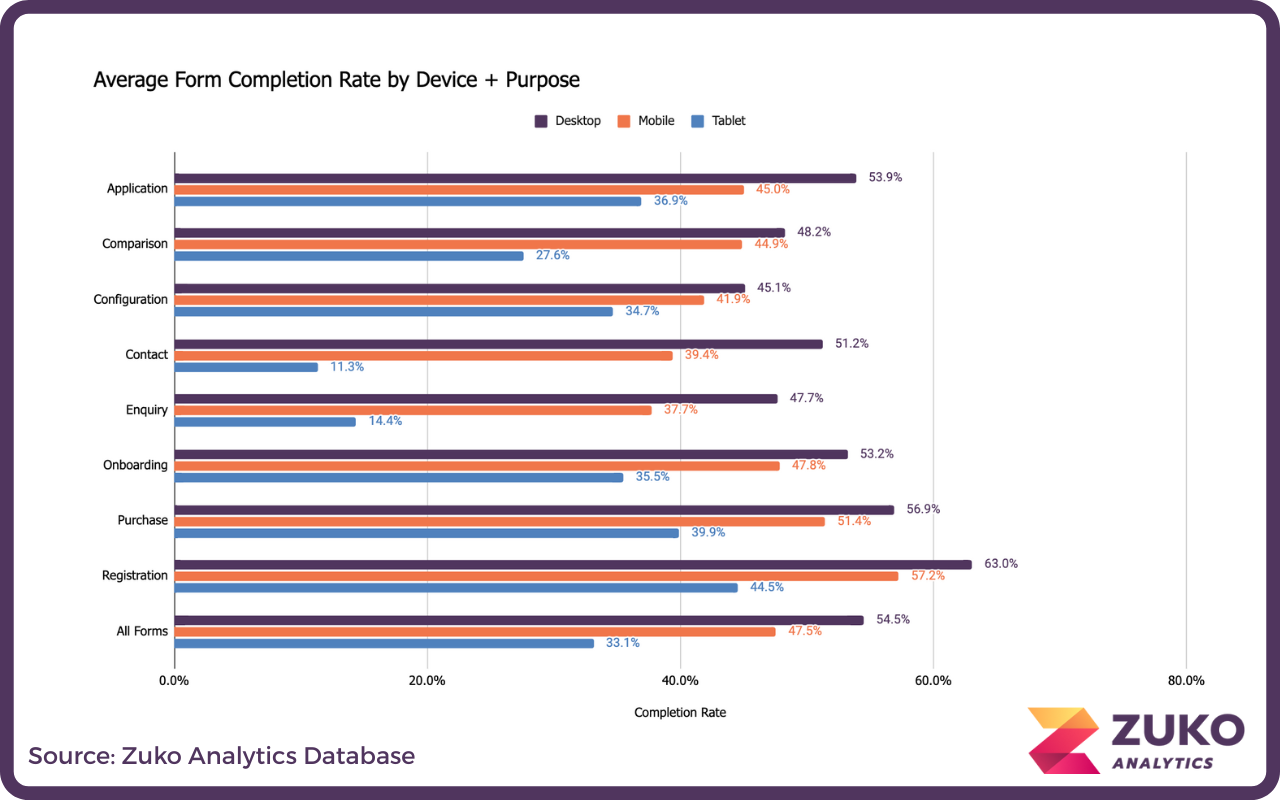
The same breakdown by browser:
.png)
Form completion by purpose:

Autofill again correlated with successful completion (with the exception of onboarding, interestingly).
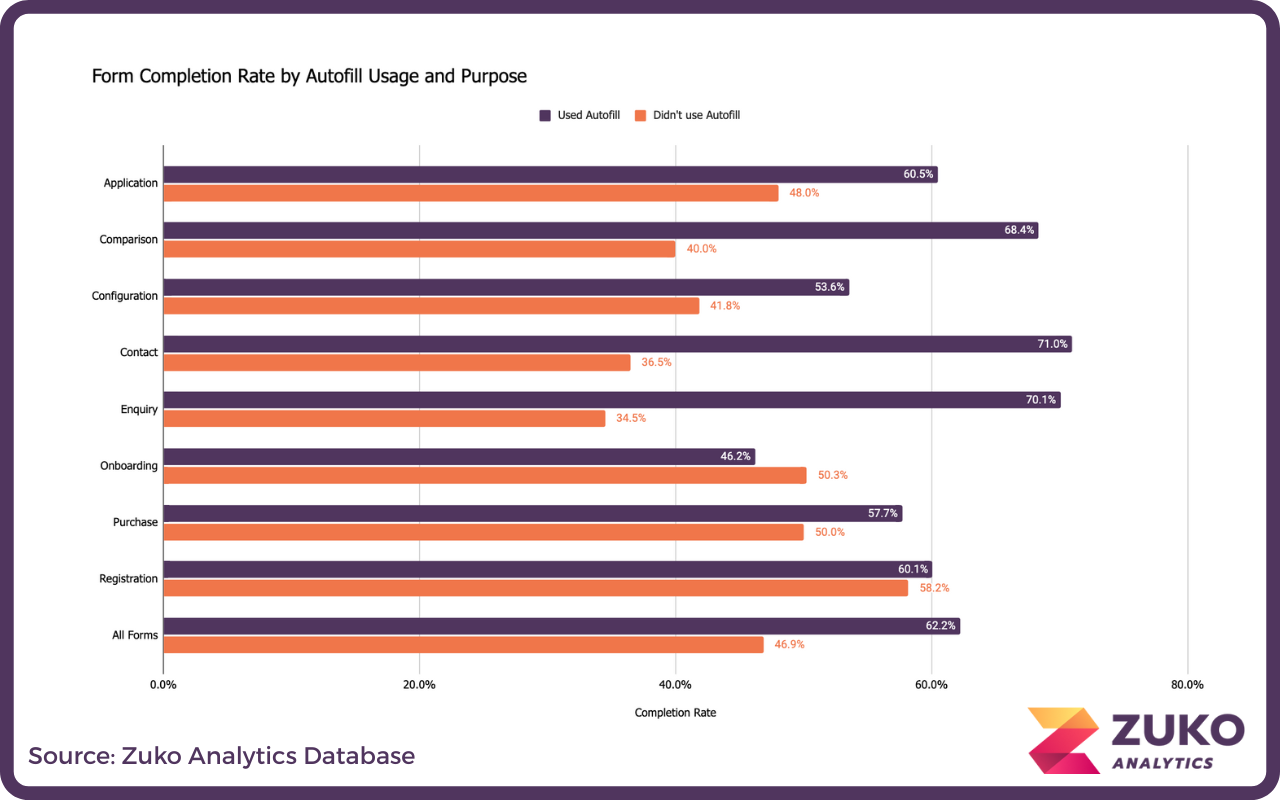
Application and comparison forms have the highest median completion times.
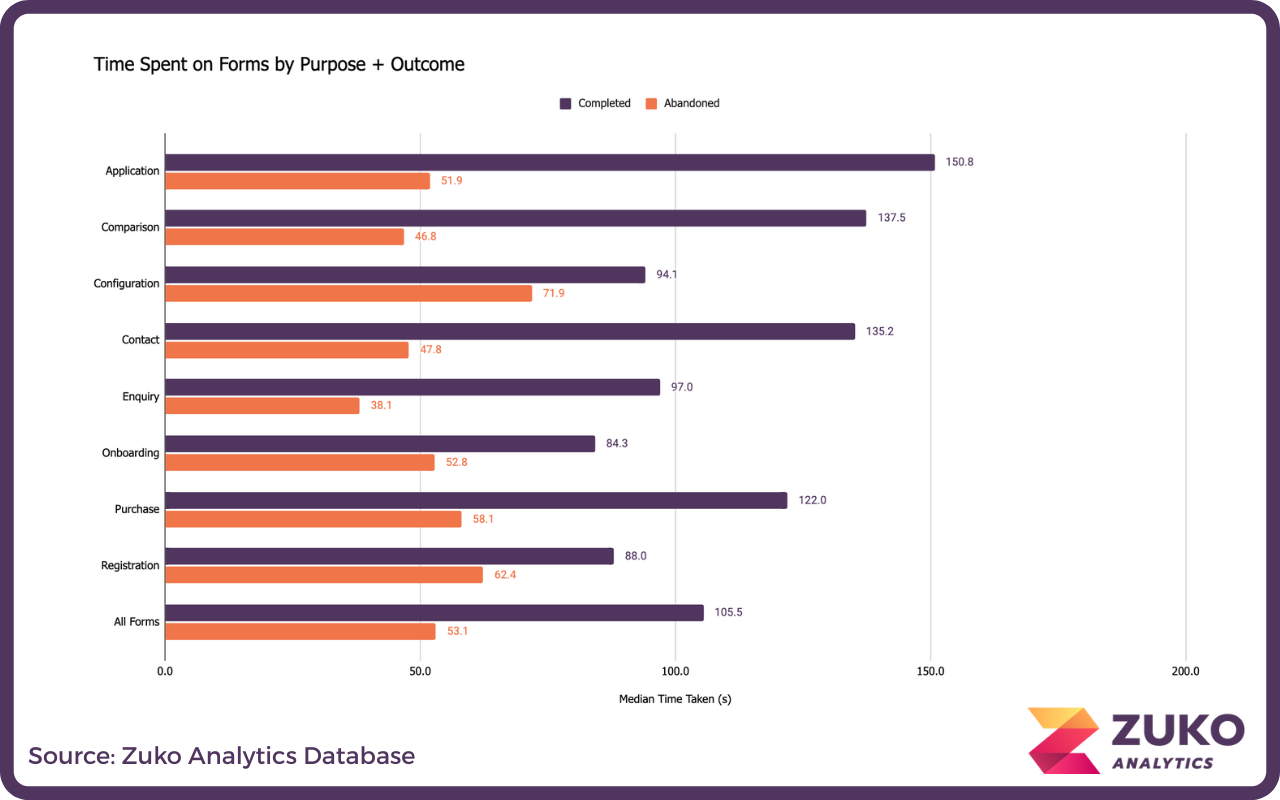
Average field returns by purpose:
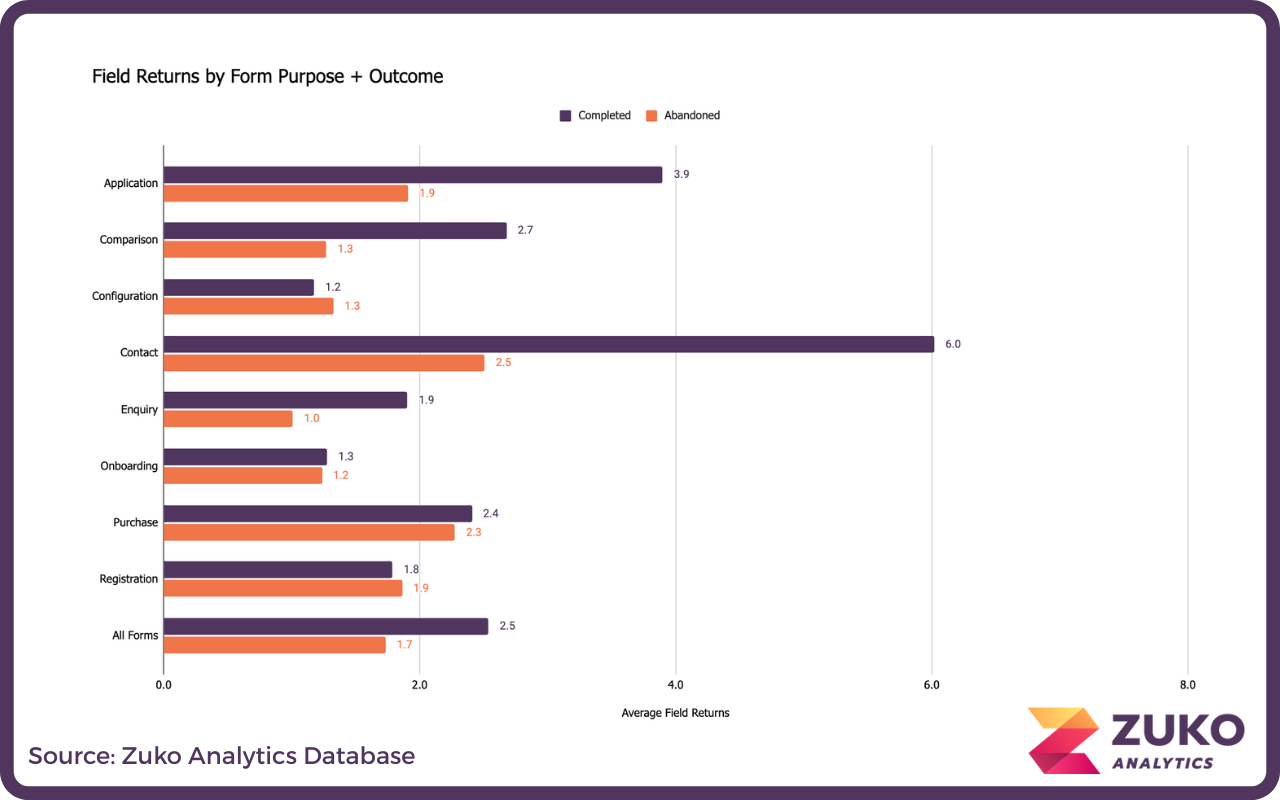
If you have any questions or would like to learn more about Zuko’s benchmarking data or how Zuko can help you improve the completion rate of your forms please contact us on sales@zuko.io
Got any questions or feedback on our data? Please get in touch using the short form below:
View to starter %- The % of form starters as compared to form views - how many people started interacting with the form after viewing it?
Starter to completion rate- The % of form completions when compared to form starters. How many people completed the form after starting it?
Starter to Completion % - of those that started interacting with the form, what % of people successfully submitted it?
View to completion %- This compares the number of form completions to form views - this is often used as a benchmark for how’ good’ a form is, and is also called a Conversion Rate.
Completion time - how long did users spend interacting with a form before submitting it?
Abandonment Time - how long did users spend interacting with a form before leaving?
Field Return - A field return is when a user exits a field after entering some data only to return to it at a later stage in their session. A single field can have multiple field returns, and a session can also have many.
Avg. Field returns- Looking across all sessions, what was the average number of times that a user had to return to fields that they had previously exited. This metrics only consider form starters in its calculation.